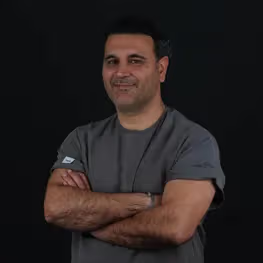Dental implant overdentures are aided as well as linked to dental implants. The main class of such consists of overdenture partials, implant-supported, fixed implant-supported, and bar and ball retained implant-supported overdentures. These are preferable due to several benefits they offer such as exceptional stability, better chewing and talking, and bone preservation. The overall cost of getting implants varies on a wide range of variables such as quantity of implants required, implant system utilized, and dentist’s office locale.
What is an Implant Overdenture?
Implant-supported overdentures are removable dentures that are stabilized by a few dental implants placed into the jawbone. Compared to conventional dentures, they offer significantly more stability and comfort, making them an ideal solution for patients who have lost all their teeth or are dissatisfied with the fit of traditional dentures, as long as they have sufficient bone support. These overdentures come in different types depending on the number of implants used (typically two for the lower jaw and four for the upper jaw) and the type of attachment (such as bar-retained or ball-retained systems).
The treatment process involves surgically placing implants into the jawbone, allowing them to fuse with the bone over several months, and then attaching the denture to the implants using custom-made connectors—all performed under local anesthesia, resulting in minimal discomfort post-surgery. Compared to traditional dentures, implant-supported overdentures provide better chewing ability, clearer speech, and help prevent bone loss by stimulating the jawbone. While the initial cost is higher and regular maintenance is needed, they are easier to clean than fixed implant bridges and typically require fewer implants, making them a cost-effective and balanced solution between removable dentures and fully fixed implant restorations.
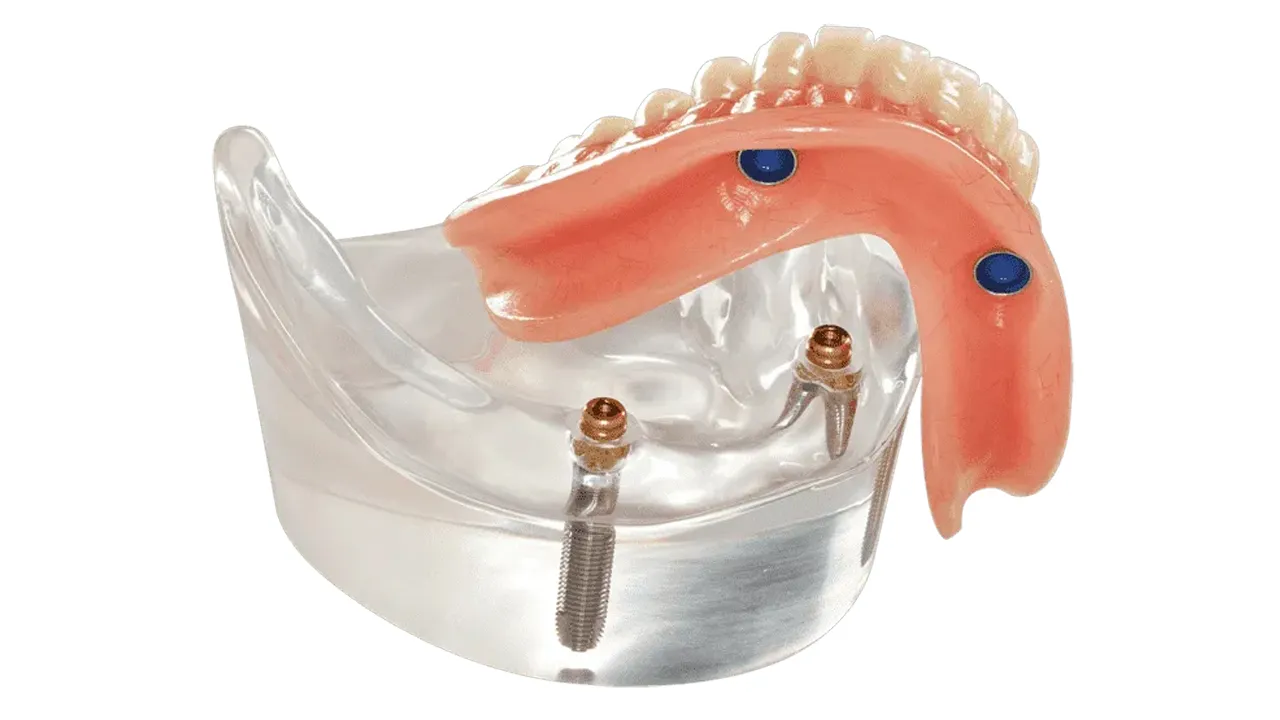
Who is the Ideal candidate for a Dental Implant Overdentures?
People who lost almost the entirety of their teeth in one or both jaws benefit from dental implant overdentures. They are a choice for clients who struggle to eat with regular dentures, find them uncomfortable, or simply want a better solution for eating and talking.
Overdentures secured by dental implants work great for people who have robust jawbones and healthy gums. Good general condition and the ability to practice persistent oral hygiene are prerequisites for the said treatment.
The implant treatment’s success rate and the quality of bone and surrounding tissue are reduced in smokers and heavy drinkers, making them a poor candidate for the procedure. Dental implant overdentures are an option to be discussed with a dentist to determine candidacy.
Type of Overdenture | Minimum Price (£) | Maximum Price (£) |
Implant Overdenture | £1,128 | £20,356 |
How is the process of a Dental Implant Overdentures?
Consultation, implant implantation, healing and osseointegration, impressions and fitting, and aftercare are just some of the steps involved in receiving implant overdentures.
The dentist does a thorough oral examination, including x-rays and 3D jaw scans, to determine the patient's candidacy for the surgery and to explain it in full. The following step is to insert the dental implants into the jawbone, once it has been decided that the patient is a good candidate for the therapy. It is common practice to do the procedure in a surgical setting, with the patient under either local or intravenous anesthesia.
Time is required for the jawbone to recover and develop around the implant once it has been placed. Osseointegration takes anywhere from three to six months to complete, depending on the implant system chosen. The dentist, after the implant has fused with the jawbone, makes an impression of the patient's mouth to use in crafting a permanent replacement tooth, or overdenture. The new overdenture is fabricated from the impressions submitted to the lab.
The dentist inserts the overdenture once ready and makes any required changes so that it fits snugly and comfortably. Proper care of an overdenture includes regular checks at the dentist, careful at-home care, and having it cleaned by a trained practitioner. It really is important to remember that the specifics of the process, such as how long it takes and what kind of implants are used, do change from case to case.
Is the procedure for Dental Implant Overdenture painful?
Yes, sometimes people experience pain or discomfort during the dental implant treatment. However, everyone experiences pain differently, and it depends on how extensive the treatment is. A local anesthetic or intravenous sedative administered by the dentist numbs the area, making dental work significantly more bearable.
It is possible to have some discomfort or swelling following the treatment. It is quite common, and medication and cold compress do help. The pain and discomfort begin to ease within a week or so.
It is important to remember that, although discomfort is experienced, it is not always the case and that people have varying pain thresholds. The dentist goes into greater detail regarding post-operative pain management and care.
What are the Types of Implant Overdentures?
The following overdenture types are listed below:
- Implant-Supported Overdentures: Implant supported overdentures are aided by 2-8 implants settled surgically into the jaw. They aid in the preservation of the present bone structure. Two separate operations are usually necessary. The first one involves inserting an implant into the jaw’s bone and the second one involves exposing the said implant for a prosthetic to be made specifically for the client. These overdentures are removed during sleeping time and cleaning.
- Fixed Implant-Supported Overdentures: It is a type of overdenture that is sealed in place and unable to be removed. Professional dental care is required to take out such prosthetics. It's the most durable but only a dentist is allowed to take it off so cleaning is difficult. It is usually the most expensive selection because it requires 4 dental implants as well as screws for support.
- Bar-Retained Implant-Supported Overdentures: Such overdenture type consists of a bar secured to one’s implant wherein denture clips on. These overdentures are much more secure compared with regular dentures and such are easy to remove and reinserted due to the bar. It is common practice to take out one’s overdenture just when one has to clean it or go to bed.
- Ball-Retained Implant-Supported Overdentures: Attachments in ball shape were utilized to secure the denture to one’s implants in such overdenture kind. It is more secure and practical than a typical denture. Cleaning as well as replacing broken or worn parts is simplified by the use of ball attachments.
- Overdenture Partials: Such overdenture kind replaces toothless areas with artificial ones just like implant-supported dentures. At least 1 implant is utilized to take the place of the natural tooth’s root, allowing such partials to clip on them. Overdentures are a better alternative to standard partial dentures because they seem more naturalistic.
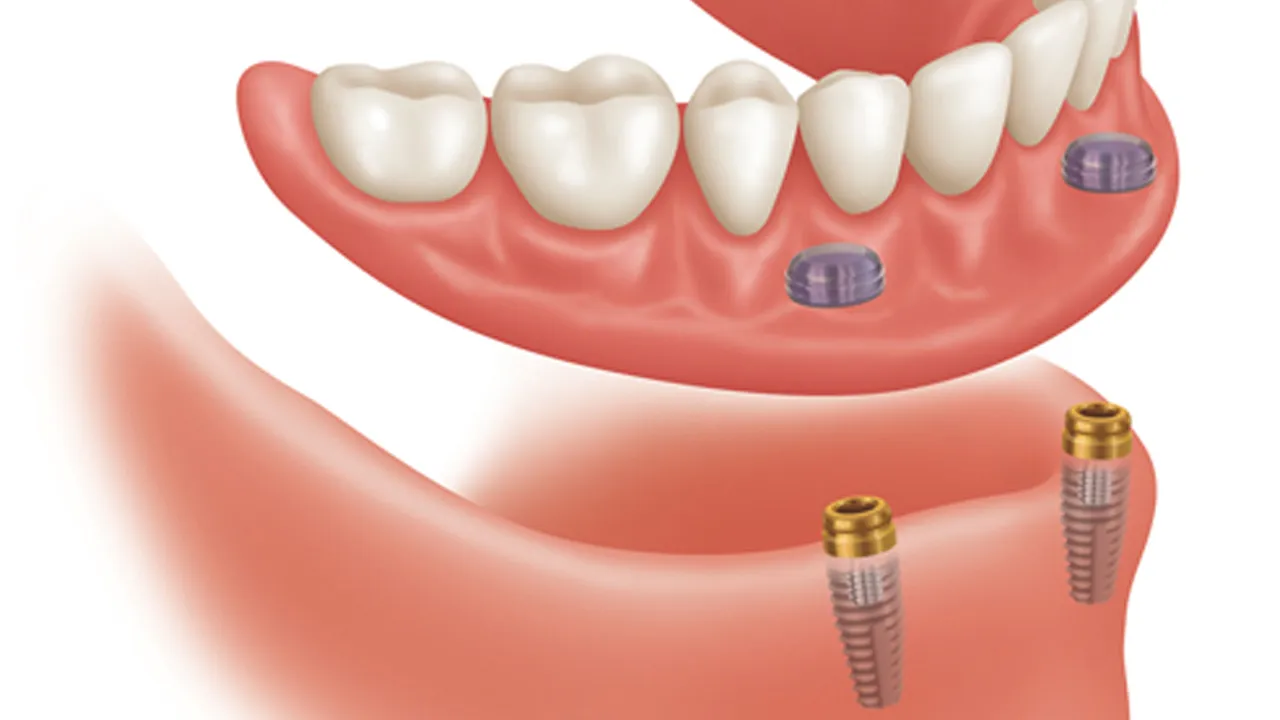
1. Implant-Supported Overdentures
Implant-supported overdentures are method alternatives to traditional ones, which rest directly on individuals' gums. Attachments fastening the denture to the implants give such overdentures superior steadiness as well as hold over traditional ones. Implant-supported overdentures are good selection if a patient has lost most or all of their real teeth but still has ample jaw’s bone to pillar implants. Additionally, they boost the patient’s life quality by facilitating good chewing function.
There are often numerous stages involved in getting implant-supported overdentures. A consultation with a dental expert or tooth surgeon is the initial step in the process of getting implant-supported overdentures. The quality as well as quantity of the client's jaw’s bone are evaluated via a meticulous examination and diagnostic data such as x-rays or CT scans.
The next means in the procedure is that clients receive dental implants, which are tiny titanium posts, surgically implanted into the jaw. These posts act as anchors for overdentures. It takes 3 to 6 months for implants to heal properly and to be in fusion with the bone through a process called osseointegration.
The implants are exposed after being healed, and tiny connectors called abutments are connected so that the overdenture are secured in place. The dentures are made specifically for patients based on an impression of their mouth, and they snap into place over the abutments.
Finally, the implant-supported overdenture is put in and the patient is carefully instructed with its care. Such overdenture is checked, cleaned, and readjusted during the subsequent session. It is crucial to remember that the specific phases change based on the patient's condition and the prescribed medication, but those are the broad strokes.
Patients who have lost most of their entire real teeth but still have sufficient jawbone to anchor one or more dental implants are opting to consider implant-supported overdentures. These overdentures improve the quality of life for denture wearers who struggle with chewing and speaking because of their false teeth.
Implant-supported overdentures, too, were viable treatment choices for clients having low bone density since they help to protect the jaw and stop any further bone atrophy. Additionally, implant-supported overdentures are a good selection for those who have had difficulties with conventional dentures due to discomfort or poor fit. They are a better long-term choice since they eliminate the need to constantly remove and replace the denture, make it feel like having teeth again, and enhance chewing and speaking abilities. Remember that the dentist needs to take into account the specifics of the case before recommending implant-supported overdentures.
2. Fixed Implant-Supported Overdenture
Fixed implant-supported dentures, or hybrid dentures, are a special kind of implant-supported overdenture that cannot be detached from the implants supporting it. Such denture is secured to the implants in the same way that a bridge is secured to natural teeth: by use of a ball and socket mechanism, a bar and clip system, or a direct screw-retained mechanism. It makes them feel like they have a full set of adult teeth.
Fixed implant-supported dentures, in contrast to removable implant-supported dentures, cannot be detached from the mouth for cleaning and maintenance. Only dentists clean or maintain the denture since only they can detach the denture from the implants.
Patients who want a permanent solution as well as do not want to take out their denture on a regular basis are good candidates for implant-supported overdentures. Such overdenture type is fixed in place over the implants and cannot be removed. Multiple implant placements are necessary, thus a healthy jaw is a must for such therapy. Patients who have trouble with removable implant-supported dentures benefit from a fixed implant-supported overdenture’s stability and retention.
Fixed implant-supported dentures require a more intricate procedure to put in. An examination by a dentist is necessary to determine if this course of action is suitable for the patient.
3. Bar Retained Implant-Supported Overdentures
A bar retained implant-supported overdentures are linked to dental implants with a connector bar. The overdenture is steadied by friction and is detached by snapping it towards the connecting bar. Such methods offer extra steadiness and firmness, compared with conventional dentures which aren’t implant-supported ones. It, as well, aids in the prevention of bone loss in the jaw, a familiar side effect of conventional dentures.
There are a few different processes involved in making a bar retained implant-supported overdentures. A dentist or oral surgeon, initially, surgically implants a titanium post towards patient’s jaw. It takes about 3 to 6 months for the implants to fully heal and fuse into the jawbone. A connection bar is settled on top of them to act as a denture’s foundation, after the implants have had time to heal. The overdenture is created from a mold of client’s jaw and snaps into position over the connecting bar. The patient goes back to the dentist once the denture has been constructed for a proper fit, any necessary revisions, and a final polish. A few months are usually required, however this time frame is flexible based on the specifics of each case and client’s requirements.
People who have lost most or all of their teeth and are searching for a more sturdy and secure alternative to standard dentures are often advised to consider bar retained implant-supported overdentures. These types of prosthetics, in comparison to conventional dentures, allow for a more secure bite, a more natural speaking voice, and a general boost in identity. People who have difficulties with conventional dentures staying in position or who experience discomfort or irritation from their dentures benefit from bar retained implant-supported overdentures. Those who have suffered extensive jaw bone loss and are therefore not ideal candidates for conventional dentures, are encouraged to consider these alternatives.
The common consensus is that bar-retained overdentures are more secure and sturdy than other implant-supported denture options. It is because the bar connector gives the denture a greater area to click onto, effectively locking it in place. Additionally, fewer implants are often needed to support and stabilize a bar-retained overdenture than other types of implant-supported dentures.
4. Ball Retained Implant-Supported Overdentures
Ball-retained implant-supported overdentures are implant prosthesis that snaps into place over the implants using a ball and socket design. A cylindrical implant made of metal is surgically implanted into the jaw. The implant is connected to the denture by a ball-shaped connector that sticks out from under the gums. A ball connector fits snugly into a socket on the dentures.
Denture’s high stability and retention is one of the ball-retained implant-supported overdenture’s key benefits. The denture’s performance and wearer's experience are both enhanced by the ball-and-socket mechanism’s ability to provide a secure, snug fit. Ball retained implant-supported overdentures require fewer implants for support than bar-retained overdentures, but they require more attachments and extra upkeep. Ball-retained implant-supported overdentures are more expensive than traditional implant overdentures because they require an extra implant and connecting hardware.
Ball-retained implant supported overdentures are most suited for patients who have enough jawbone to anchor the implant, who practice good oral hygiene, and who are dedicated to continuing this routine after the treatment. Patients who have had sensitivities to acrylics or metals used in conventional dentures benefit greatly from them as well.
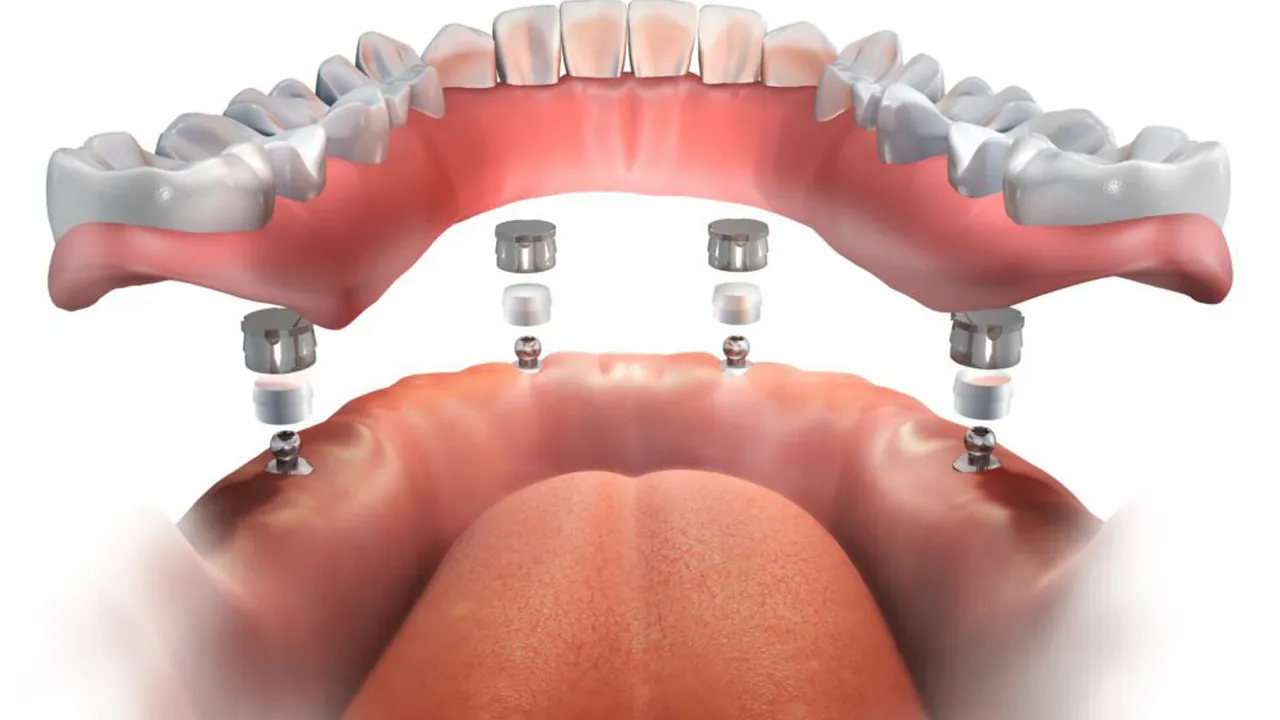
Keep in mind that individuals with certain health issues, such anemia or heavy smoking or drinking, are not good candidates for ball-retained implant-supported overdentures. They need to see a dentist to figure out what course of action is best for them.
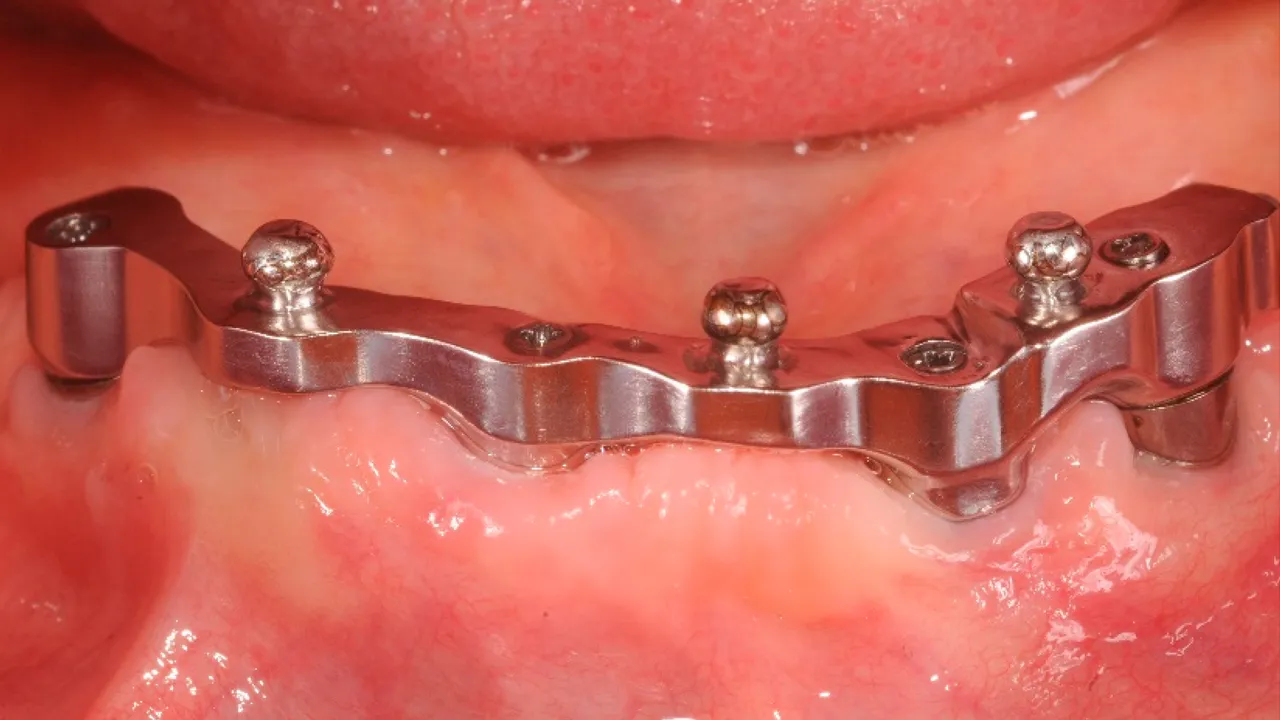
5. Overdenture Partials
Overdenture partials are dentures that are anchored by dental implants. It is like a traditional partial denture, except instead of being steadied by clasps that attach to the real teeth, it’s stabilized by dental implants.
Overdenture partials are utilized if a person is losing most of their teeth but still has some real teeth or dental implants in place. People who have a burden on eating or speaking because of lost teeth, or who are self-conscious about the appearance of their smile, are good candidates for overdenture partials. Furthermore, they enhance the mouth’s general condition and jaw. Overdenture partials serve multiple purposes, including the maintenance of the remaining teeth, the prevention of jawbone atrophy, and the restoration of face contour. It’s a good choice for people who can’t have regular dentures or implant-supported bridges.
What are the benefits of Overdentures?
Overdentures have several benefits. Listed below are the benefits of overdentures:
- Strengthened hold and stability: Overdentures are an alternative to typical detachable partial dentures due to their reliance on dental implants or the patient’s remaining real teeth for support. It makes the prosthetic more usable and comfortable by reducing the likelihood of slippage and movement.
- Enhanced capacity to chew: Restoring normal chewing, biting, and speaking functions is made possible by overdentures. Nutrition and quality of life as a whole are enhanced as a result.
- Protection of the rest of the teeth: Conventional dentures place unnecessary stress on the teeth that are still present, accelerating their erosion. However, overdentures relieve stress on the client’s original teeth, allowing them to last longer.
- Jawbone preservation: The bone in the gap begins to deteriorate when a tooth is lost. Overdentures are supported by dental implants, which stimulate the jawbone and promote its preservation and new bone formation.
- Improved visual appeal: Customized overdentures restore a patient’s smile by mimicking the color, shape, and size of their natural teeth.
- Reasonably priced: Patients who do not qualify for or are not willing to pay for implant-supported bridges have a more affordable alternative in the form of an overdenture.
- Convenient: Overdentures are taken out for sleeping and cleaning, making them low maintenance.
- Creates a more natural experience: The stability supplied by the remaining natural teeth or implant abutments allows the overdenture to feel more like natural teeth.
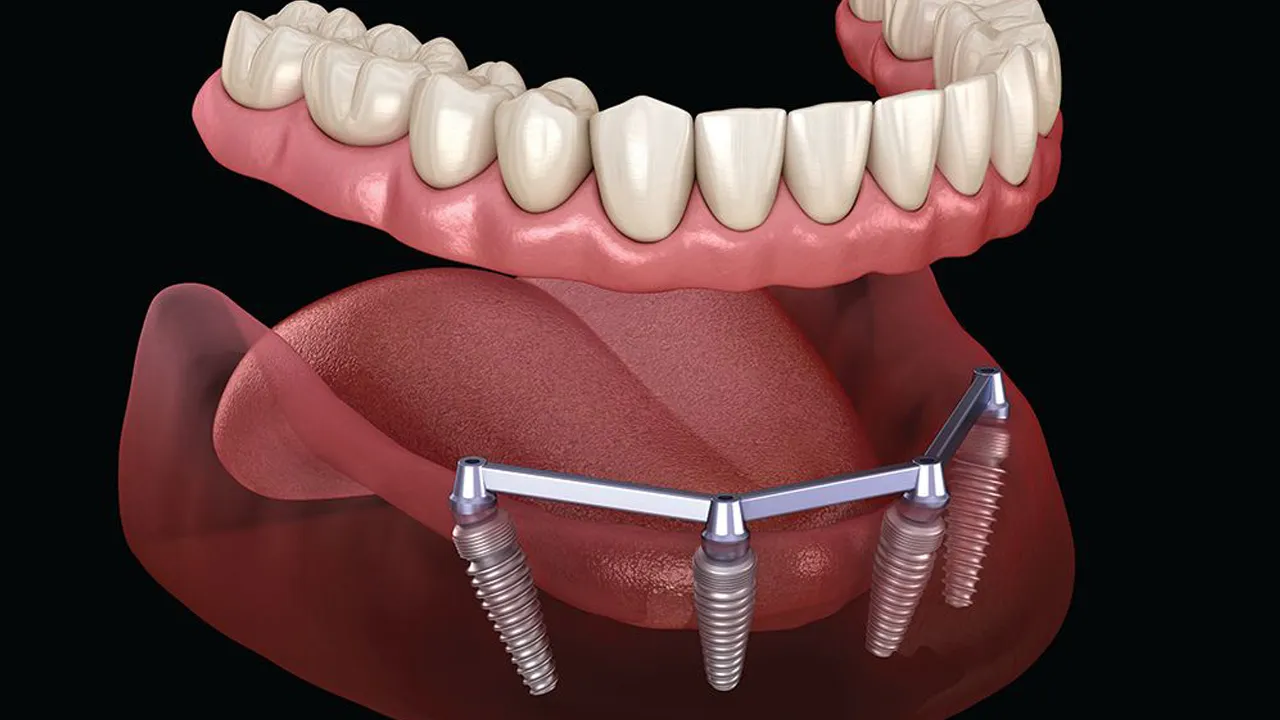
What is the Cost of Implant Overdentures in Turkey?
Implant overdentures in Turkey have become a popular choice for international patients thanks to their affordability, quality materials, and experienced dental professionals. The cost of implant overdentures in Turkey typically ranges between £1,128 and £20,356 per arch, depending on factors like the number of implants used, type of overdenture (removable or fixed), materials, and the complexity of the case.Many clinics offer all-inclusive packages that cover implant placement, abutments, prosthetics, and follow-up care, making Turkey a top destination for patients seeking high-quality treatment at lower prices. When researching dental treatment prices in Turkey, it's important to choose reputable clinics with experienced professionals to ensure long-term success and excellent care. Compared to the UK or USA, patients can save significantly, even with travel expenses included, while still receiving top-tier care and modern implant systems.
Many dental clinics offer dental implants prices in Turkey that include full packages – covering surgery, abutments, prosthetics, and sometimes accommodation or transport – making treatment planning easier. For those exploring dental implants in Turkey, it's common to find clinics providing financing or staged payment options, allowing patients to manage costs more comfortably. This combination of cost-effective treatment, expert care, and patient-focused services continues to position Turkey as a leading destination for high-quality dental implant solutions.
How do you clean an Overdenture?
Properly caring for an overdenture is crucial to both overall dental health and its durability. Here are some instructions for cleaning an overdenture: /p>
- Take off of the overdenture and clean it with a soft bristles brush and some mild soap. It aids in cleaning the denture's surface of any buildup of plaque or dirt.
- Rinse it under warm running water for a few minutes to remove any remaining soap or dirt from the overdenture.
- Use a denture brush or a soft-bristled toothbrush to clean the remaining teeth or dental implants supporting the overdenture.
- Rinse the mouth out completely to get rid of any leftover food or plaque.
- Brush the abutments (the overdenture's connectors) lightly with a regular toothbrush or an implant abutment cleaning brush.
- Use a denture cleaning solution or a solution of water and white vinegar to disinfect the overdenture. Do it once a day, or more often if the dentist advises it.
- Give the overdenture a good rinsing under warm running water, before re-insertion.
- Remember that keeping the overdenture clean and hygienic requires one to practice appropriate oral hygiene habits by following the tips for cleaning false teeth. Maintain good oral hygiene by brushing and flossing at least twice daily and going in for regular dental checkups.
Are the materials used in Overdentures long-lasting?
Yes, overdentures are made from durable materials and typically last long. However, their longevity is affected by the wearer's dental hygiene routine, the quality of the overdenture's design, and the materials utilized.
Overdentures often have an acrylic or acrylic plus metal alloy base. Acrylic lasts for a long time depending on how often it is used and how well it is maintained. The acrylic wears down over time, but it is relined or recreated to look and feel like new again.
Overdenture teeth are composed of acrylic or porcelain to look and feel like real teeth. These teeth are strong, but they wear down and eventually fall out or break.
Metal is typically utilized for the attachments that secure the overdenture to the patient's remaining teeth or dental implants. The problem is that these fasteners wear out or become loose over time, necessitating possible replacement.
Overdentures usually last longer with regular dental checkups, diligent care, and regular maintenance. The dentist keeps tabs on the overdenture's health and makes repairs or adjustments as needed to ensure it continues to do its job.
An overdenture's durability is generally proportional to the patient's commitment to good oral care, regular dental cleanings, and proper use.
Can I eat hard foods after having an Overdenture?
Yes, it is acceptable to eat a wide variety of foods while wearing an overdenture. However, there are some restrictions on foods while healing after the procedure.
The gums and tissue need time to recover and adjust to the new prosthetic, so it's best to eat soft foods for a while after getting an overdenture put in. Overdentures often become loose or their attachments damaged if users eat foods that are very tough, hard, sticky, or crunchy.
Patients are advised to gradually increase their intake of solid foods while recovery continues to minimize further damage to the attachment points. Furthermore, keep up a regular routine of proper dental hygiene to avoid the buildup of plaque and food particles around the attachments.
Maintaining dental checkups is essential for keeping the health and efficacy of the overdenture. The dentist gives the patient instructions on how to take care of the overdenture and what foods are safe to eat.
What is the difference between Overdentures and Dentures?
Dentures and overdentures are both oral prosthetic devices, filling in the toothless area. It’s vital to note that there are significant distinctions between the two. Some probably have a question in mind, ”what is denture?” and “how does such differ from the latter?” Overdentures are made to fit over a client's dental implant or remaining real teeth, while dentures depend on the remaining real teeth and surrounding tissue for support. The main distinction is the foundational structure and steadiness, as overdentures are extra sturdy and pleasant than dentures since they rest on a client’s residual real teeth or dental implant for support.
Another distinction is that dentures cause further tooth loss for the reason that they apply pressure on the patient’s remaining real teeth, whereas overdentures actually help preserve the patient’s remaining real teeth by easing such pressure on them. Additionally, overdentures supported by dental implants protect the jawbone by stimulating the bone and fostering new bone formation, something that is impossible with dentures.
Overdentures are prosthetic teeth that are designed to fit over the patient's natural teeth making the smile look more natural. They are indicated for people who have lost most of their teeth or have inadequate remaining teeth and tend to be more costly than standard dentures. Patients who are fully edentulous or who have very few remaining teeth, on the other hand, are good candidates for traditional dentures.
What is the difference between Overdentures and Implants?
Overdentures and dental implants are both forms of oral prosthetic devices utilized to substitute lost teeth. There are, nevertheless, important distinctions between the two.
Dental implants are tiny titanium posts placed into the jaw’s bone to change missing teeth. They take the place of a real tooth’s root and aid a variety of oral prosthetics, namely, crown, denture, or bridge. Dental implants are an excellent remedy for replacing lost teeth for the reason that they feel, appear, and operate similar to real teeth. Furthermore, they aid in the maintenance of healthy jawbone tissue by simulating the action of a real tooth’s root.
Overdentures, meanwhile, are detachable dental prosthetics meant to cover any gaps left by lost teeth or dental implants. It functions similarly with denture but attaches to one’s real teeth or implant abutments. Overdentures are an effectively proven method of rescuing a smile by protecting teeth that are left, stopping bone loss in one's jaw, and restoring face contour. They look real, feel real, and are more secure than dentures.
Overdentures are dental prosthetics that are meant to fit over the patient’s real residual teeth or implant abutments, as opposed to dental implants, which are meant to substitute the missing tooth roots and provide long-lasting support for a dental prosthetic. Patients who prefer a long-lasting solution that looks and feels like their own teeth definitely consider dental implants, but individuals who still have some of their real teeth and prefer a removable solution for lost teeth does benefit from overdentures.
